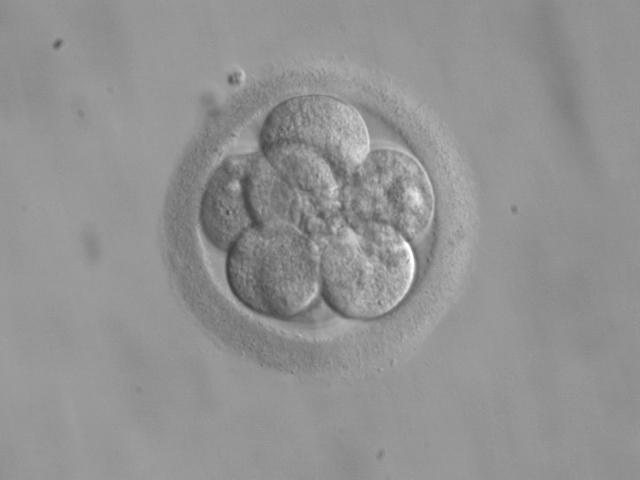Myths about teaching can hold you back
- Year 10
- AQA
- Foundation
Using stem cells in medicine: potential benefits, risks and ethical issues
I can describe examples of how embryonic and adult stem cells could be used in medical treatments, including potential benefits, risks and ethical issues.
- Year 10
- AQA
- Foundation
Using stem cells in medicine: potential benefits, risks and ethical issues
I can describe examples of how embryonic and adult stem cells could be used in medical treatments, including potential benefits, risks and ethical issues.
These resources will be removed by end of Summer Term 2025.
Switch to our new teaching resources now - designed by teachers and leading subject experts, and tested in classrooms.
These resources were created for remote use during the pandemic and are not designed for classroom teaching.
Lesson details
Key learning points
- Embryonic and adult stem cells can be used in treatments to make new specialised cells to replace damaged ones.
- Examples include using stem cells to treat type 1 diabetes and bone marrow transplants for leukaemia.
- Transplanting stem cells into a patient has risks (e.g. immune rejection, cancer from uncontrolled division, infection).
- Ethical objections to harvesting embryos as a source of embryonic stem cells.
- Debating benefits versus risks and ethical issues.
Keywords
Embryonic stem cell - A cell taken from the embryo that can differentiate into any type of specialised cell.
Adult stem cell - A cell found in specific regions of the body that can differentiate into a limited number of related specialised cells.
Specialised cell - A differentiated cell that is adapted to carry out a particular function.
Immune rejection - When a patient’s immune system attacks non-self cells (e.g. transplants).
Ethical - An ethical issue relates to whether an action and its consequences are right or wrong.
Common misconception
That stem cells can treat more diseases than they have been proved to. All stem cells used are taken from embryos.
Introducing the idea of induced stem cells and adult stem cells in treatments, but also that the main use is in research rather than full treatment of a disease or condition.
To help you plan your year 10 combined science lesson on: Using stem cells in medicine: potential benefits, risks and ethical issues, download all teaching resources for free and adapt to suit your pupils' needs...
To help you plan your year 10 combined science lesson on: Using stem cells in medicine: potential benefits, risks and ethical issues, download all teaching resources for free and adapt to suit your pupils' needs.
The starter quiz will activate and check your pupils' prior knowledge, with versions available both with and without answers in PDF format.
We use learning cycles to break down learning into key concepts or ideas linked to the learning outcome. Each learning cycle features explanations with checks for understanding and practice tasks with feedback. All of this is found in our slide decks, ready for you to download and edit. The practice tasks are also available as printable worksheets and some lessons have additional materials with extra material you might need for teaching the lesson.
The assessment exit quiz will test your pupils' understanding of the key learning points.
Our video is a tool for planning, showing how other teachers might teach the lesson, offering helpful tips, modelled explanations and inspiration for your own delivery in the classroom. Plus, you can set it as homework or revision for pupils and keep their learning on track by sharing an online pupil version of this lesson.
Explore more key stage 4 combined science lessons from the Stem cells and differentiation unit, dive into the full secondary combined science curriculum, or learn more about lesson planning.

Equipment
None required.
Content guidance
- Depiction or discussion of sensitive content
Supervision
Adult supervision recommended
Licence
Prior knowledge starter quiz
6 Questions
Q1.True or false? Egg cells contain a nucleus.
Q2.What is the role of the immune system?
Q3.Match the specialised cell to its adaptations that help it carry out its role.
A tail to help it move.
Many mitochondria to provide energy for contraction.
Biconcave shape to provide a large surface area for diffusion.
Contains chloroplasts for photosynthesis.
Q4.True or false? Embryonic stem cells can only differentiate into a limited and related number of cells.
Q5.The Oak students are discussing diabetes. Who is incorrect?




Q6.Select the option which correctly describes where bone marrow is found and one of its roles.
Assessment exit quiz
6 Questions
Q1.The two types of stem cells in humans are adult stem cells and stem cells.
Q2.Which diseases can stem cells be used to help treat or have the potential to treat in the future?
Q3.Which is not a current use of stem cells?
Q4.Why do some people object to the harvesting of embryos as a source of embryonic stem cells?



